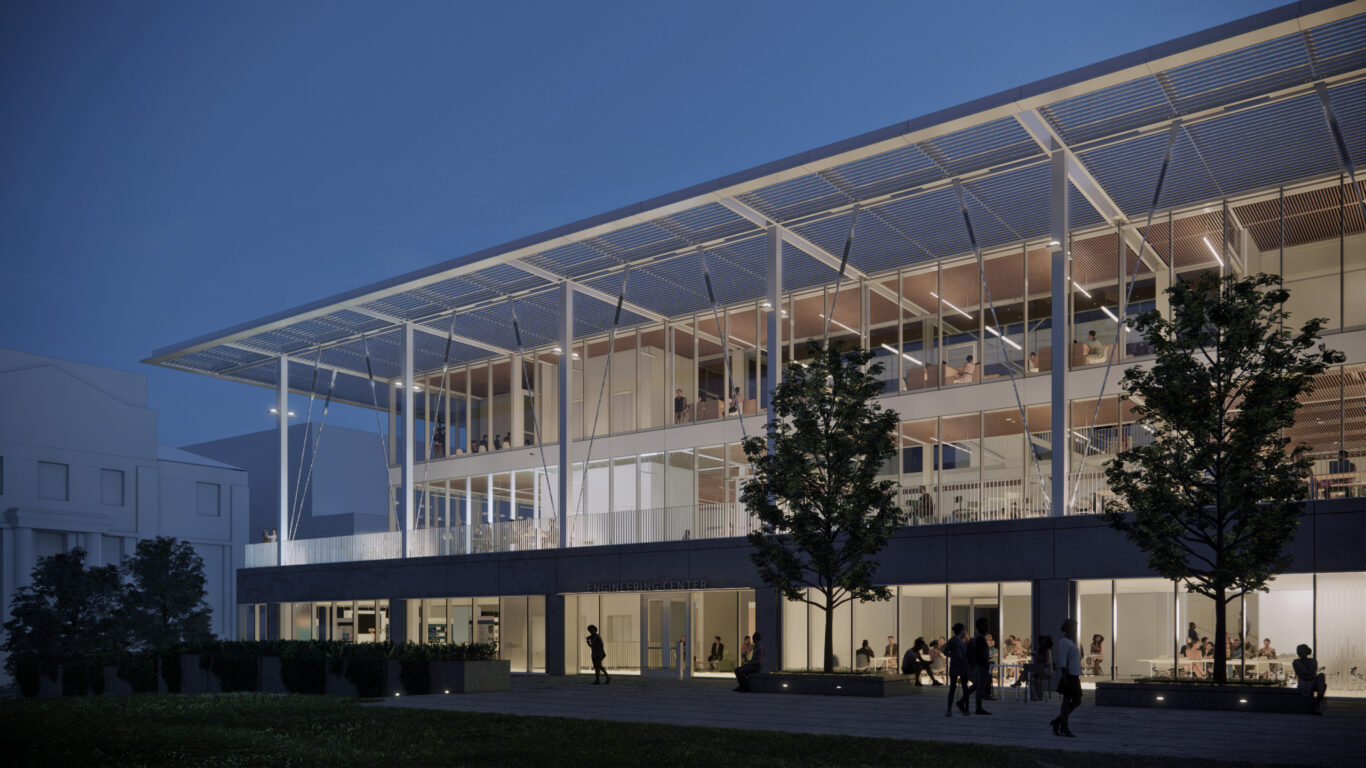University of Illinois Urbana-Champaign – Campus Instructional Facility
Urbana, Illinois, United States


The renovation and expansion of an existing facility will create a dynamic and welcoming presence for the College of Engineering community. Adapting an existing structure, the project advances the university’s goals for environmental responsibility, equity, and inclusion.
Engineering has been a core academic focus at the University of California, Berkeley since the institution’s founding in 1868. More than 150 years later, Berkeley Engineering has evolved tremendously, establishing numerous disciplines, research institutes, and programs. Today, the campus’s “Engineering Neighborhood” of more than a dozen buildings reflects this evolution–ranging from the Hearst Memorial Mining Building, built in 1907, to 21st-century facilities for nanofabrication, rapid prototyping, and bioengineering. The Grimes Engineering Center is the college’s interdisciplinary heart, containing shared resources such as the Engineering Student Services offices, the Kresge Engineering Library, and the Sibley Auditorium.

Since the Grimes Engineering Center’s establishment in 1980, engineering student enrollment has grown by more than 80 percent. As Berkeley Engineering anticipates continued growth, the importance of the new Grimes Engineering Center is clear: it is the social core, interdisciplinary nexus, and entrance to the college. Through a project that adapts and builds upon the existing structure, the new Grimes Engineering Center will expand capacity and foster a dynamic culture of inclusion, collaboration, and innovation.
The new Grimes Engineering Center is designed with a transparent and welcoming profile that honors its purpose as a place for connection, as well as its significant location on the campus. The building is situated at an intersection where the esplanade extending from Berkeley’s iconic Campanile meets the “Classical Core”–a series of Neoclassical buildings which date back to the 1898 campus master plan. The existing Engineering Center is a Brutalist-style building distinguished by stepped terraces and exposed concrete structural exterior walls.
Repurposing the original structure as the foundation for a new building, the redesigned Grimes Engineering Center adds 35,570 square feet to the former facility with a lightweight glass and steel pavilion. The architecture of the pavilion and its integration with the foundation formally references the surrounding Neoclassical buildings, tracing the outline of a heavy foundation, rhythmic colonnade, and thin cornice, with a modern material palette.


The highly transparent pavilion, a counterpoint to the solid materiality of the original buildings, will prioritize access to daylight and outdoor spaces with a skylight at the center of the building, three stories of floor-to-ceiling windows, and terraces at the ground level and second story. The open, transparent design not only displays student activity, it proudly exhibits its resilient engineering. Every structural system in the building will be exposed, allowing engineering students to examine the connections, gussets, dampers, a rod-hung stair, and even an innovative tensioning system. The design will provide an immersive example for students to experience pioneering solutions to engineering challenges.
I’m excited to see how the space will become a hub for creativity and innovation for Berkeley engineers. I truly believe it will improve accessibility, diversify functionality and bolster community.
The adaptive reuse of the existing building significantly lowers the overall carbon emissions of the project. SOM conducted a Whole Carbon Life Cycle analysis of the actual project plans to build upon and retrofit the existing building, and the demolition and construction of a hypothetical new building of the same size and materials.


As expected, the results of this analysis demonstrated significant carbon savings, including a 45% reduction in the structural system, a 29% reduction in new exterior enclosure, and more than a 90% reduction in demolition and off-hauling. The analysis affirmed the university’s decision to retain the existing building, consistent with the University of California’s broader sustainability policies.
The new Grimes Engineering Center needed to be an inclusive space that welcomes students, faculty, and staff from diverse cultural and academic backgrounds. A rigorous engagement process with students, faculty and staff brought to the fore three priorities that guided the design: visibility, belonging, and choice. The redesign expands, and aggregates the college’s student support programs and innovation programs within the facility.

The Forum, a three-story atrium-like space, is designed to flexibly accommodate lectures, poster sessions, and industry events. Inclusivity and advising programs surround the Forum, such that they are easily discoverable by students. Informal gathering areas are strategically located to provide opportunities for social interaction. SOM designed an array of study space types to offer numerous options for where and how to collaborate, including indoor and outdoor options appropriate for large groups, small groups and individuals.
Grimes Engineering Center students will go on to design and build the future; we want the place where they learn, collaborate and innovate together to support and inspire them to make our world more equitable, healthy and sustainable for all.
The design clusters multiple groups into one dynamic facility, including the Berkeley Center for New Media; the Sutardja Center for Entrepreneurship & Technology, which supports developing entrepreneurs and innovators with courses that are open to the entire university; and Inclusive Excellence programs, which, among many significant efforts, addresses pipeline issues in engineering fields through K-12 outreach.

Urbana, Illinois, United States
Colorado Springs, Colorado, United States
01/